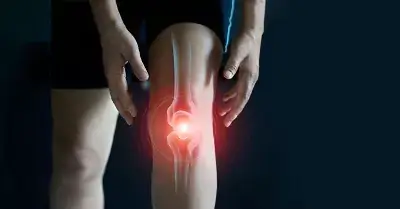ARTHROSCOPY
BEST ARTHROSCOPIC DOCTOR IN CHANDIGARH- DR. VIKAS MEHRA
Dr. Vikas Mehra Clinic in Chandigarh is equipped with cutting-edge technology to treat patients. One of the most recent technologies allows you to perform surgery or see the insides of your joints through a small incision. Yes, you read that correctly. Your joint problem can now be diagnosed and treated with a teeny-tiny incision the size of a buttonhole.


WHAT EXACTLY IS ARTHROSCOPY?
As difficult as the word may sound, this procedure is even more difficult and should only be performed by an experienced arthroscopic surgeon. Arthroscopy is a procedure that involves inserting a narrow tube through a small incision to examine the inside of your body and the joint. This procedure is used to diagnose any type of joint problem without requiring a large incision. The narrow tube is made of optical fibre and has an end camera that is linked to a high-definition video screen. The screen shows a magnified image of the patient’s anatomy as well as joint insights.
By inserting ultra-thin surgical instruments through the same incision, the surgeon can also treat various underlying minor joint issues.
WHY DOES A SURGEON PERFORM AN ARTHROSCOPY?
Your surgeon can easily use a traditional method because that is what he learned in medical school. However, as previously stated, Arthroscopy is a much more advanced procedure that is used to diagnose joint and bone issues in the knee, ankle, hip, elbow, wrist, and shoulder joints.
When noninvasive procedures such as X-rays and other imaging techniques fail to diagnose the root cause of the problem, doctors resort to this invasive procedure. Arthroscopy is also recommended when non-surgical treatments such as medications, physical therapy, or injections fail to ease the discomfort and pain. The arthroscopy procedure gives an answer to previously unanswered questions.
The following are some conditions that can be treated with Arthroscopy and an Arthroscopic surgeon:
1. Knee Arthroscopy
The following are the indications for performing an arthroscopy knee surgery.
- Getting rid of sepsis in the knee
- Reconstructing a torn or damaged ACL (Anterior Cruciate Ligament).
- Treating Patellar problems (knee cap)
- Removing inflamed or swollen synovial tissue
- Remove any damaged cartilages.
- Meniscus repair
2. Hip Arthroscopy
Hip arthroscopy is becoming increasingly popular due to its ability to treat paediatric orthopaedic disorders. The following are the indications for performing hip arthroscopy.
- Managing femoroacetabular impingement
- Chondral pathology
- Hip joint degeneration
- Internal and external hip snapping
- Synovial exudation
- Septic hip joint
3. Shoulder Arthroscopy
The shoulder joint is a highly mobile joint. The following are shoulder joint conditions for which an experienced Arthroscopic Doctor should be consulted:
- Determining joint instability
- Rotator cuff injury
- Shoulder bursitis
- Adhesive capsulitis
- Subacromial decompression
- Torn cartilages
- Biceps tendon injury or rupture
4. Ankle Arthroscopy
The following are the indications for having an ankle arthroscopic procedure.
- Osteochondral defects
- Calcifications
- Loose bodies
- Arthrofibrosis
- Posterior bony and soft-tissue impingement
- Stiffness
5. Arthroscopy of the Elbow
- Arthritis inflamed
- Septic elbow arthritis debridement
- Tennis elbow
- Osteochondral flaws
HOW IS THE PATIENT PREPARED FOR ARTHROSCOPY?
The precise preparation for Arthroscopy is tailored to the specific joint. However, some common joint preparation drills are listed below.
- Avoiding Certain Drugs/Supplements- Your Arthroscopic surgeon may request that you refrain from taking certain medications/supplements prior to surgery in order to avoid excessive bleeding or a delay in healing. It is also recommended that you avoid alcohol, smoking, and other stimulants before having any surgery.
- Anesthesia- Of course, you don’t want to be in pain, so anesthesia must be administered. Anesthesia is used to block sensations so that the patient does not feel pain. There are three kinds of anesthesia:
1. General Anesthesia- General anesthesia is administered to render the patient unconscious for the duration of the operation. However, this is rarely given to patients during Arthroscopic procedures.
2. Local Anesthesia- Numbing agents are injected in the local area to block sensations in the specific area, as in knee arthroscopy. The individual remains awake throughout the procedure.
3. Regional Anesthesia- The most common type of regional anesthesia involves inserting a small needle between the spine’s two lumbar vertebrae. Your lower body will become numb, but you will remain awake.
WHERE CAN I FIND THE BEST ARTHROSCOPIC DOCTOR IN CHANDIGARH?
Don’t worry, you now have the best doctor on your contact list. Dr. Vikas Mehra’s clinic offers the best Arthroscopic surgery. Dr. Mehra is the best arthroscopic doctor in Chandigarh, using cutting-edge technology and skilled hands.
Do you have any joint issues? Consult the best Arthroscopy doctor in Chandigarh. Remember that arthroscopy treatment is not a simple procedure; it requires careful planning, expert hands, and a skilled approach.
+91-9814612696
+91-9876044747
Plot No 1501, Sector 33d, Chandigarh
Monday to Friday - 9:30am-8:30pm Saturday- 9am-3pm, Sunday - Closed
